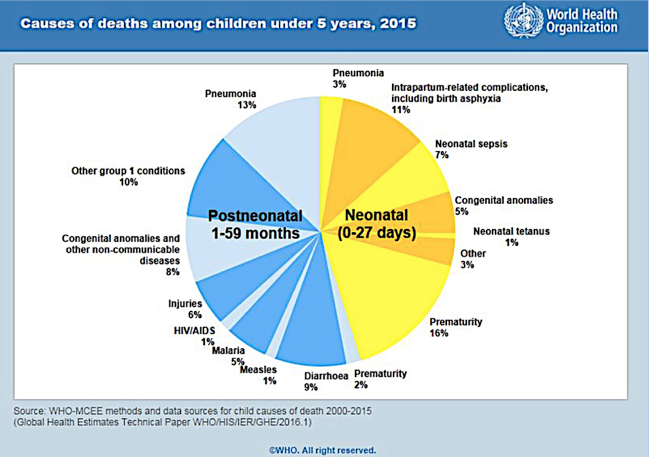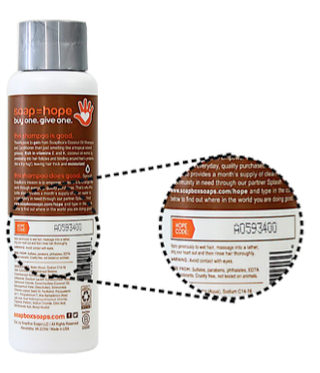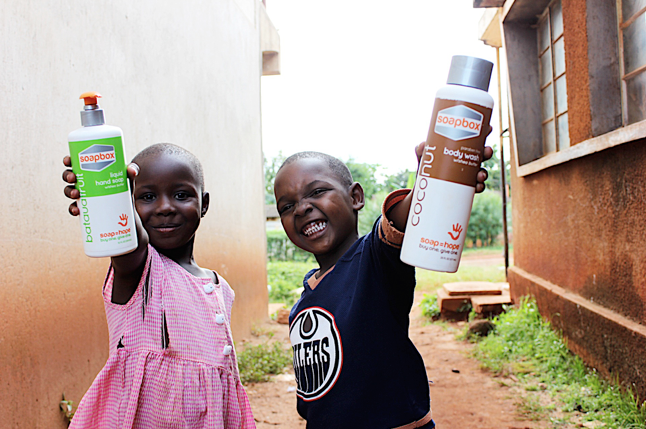Summary
Eight hundred and forty children’s lives under the age of five can be saved each day with the simple tools of soap and health/hygiene initiatives. SoapBox is a for-purpose brand that exists to address this issue in the world. Our products donate a bar of soap with every purchase made and do so with a sustainable business model. SoapBox partners with nonprofit organizations that provide hygiene education to the communities they serve, bringing more value to each bar donated. By involving consumers with our giving, SoapBox is not only sharing the charitable experience with them, but also making the issue known. We are encouraging consumers to take a lead in supporting a brand that tackles the reality that many people do not have access to or know the value of soap.
With a toll of 16,000 children under the age of five dying every day, 4,000 resulting from preventable causes such as pneumonia and diarrhea, how can we ignore that number? According to UNICEF, progress has been made over the years. Global deaths of children under the age of five have decreased from 12.7 million in 1990 to 5.9 million in 2015, a reduction of more than 50 percent.1 This number, however, still falls short of the Millennium Development Goal 4 (MDG4) of a decline of two-thirds by 2015 set by the United Nations.2
Of the leading causes of death for children under the age of five in 2015, infectious diseases and conditions amounted to half of the deaths; pneumonia equated to 16 percent and diarrhea 9 percent.3 Combined, they are to blame for 25 percent of the overall deaths. When we multiply the 16,000 deaths by the 25 percent that is from preventable causes it comes out to be 4,000 children who die every day from diarrhea and pneumonia.

*Chart from World Health Organization4
Now that we understand the magnitude of the importance of reducing these causes, what is the solution? According to Freeman et al., a 23 percent reduction in diarrheal infection was found in an analysis of more than 40 studies when subjects washed their hands after being in contact with excreta.5 Aiello et al. found, in a review of 30 studies, a 21 percent reduction in respiratory illnesses when handwashing was paired with non-antibacterial soap.6 Between the two, if we multiply the 4,000 daily preventable deaths by 21 percent (the lower of the two) that could have been saved with handwashing, 840 additional children’s lives could be saved per day. And all that this requires are health/hygiene initiatives and access to soap. SoapBox’s co-founder David Simnick realized this simple, yet effective, solution.
While working for the USAID as a sub-contractor, Simnick realized how clean water and sanitization aid could better reach its goals by pairing clean water with essential hygiene items like soap. He took the lead on his idea and founded SoapBox Soaps with the mission to empower consumers to change the world through everyday, quality purchases. He wanted to bring consumers in and create an opportunity for them to give easily. Often people do not have time or money to donate toward a cause, so SoapBox provides a consumer good that is paired with doing good. SoapBox is a personal care company that cares. Products sold include hair care, body wash, bar soap and liquid hand soap. For every purchase made a bar of soap is donated to a person in need internationally or state-side. This makes donating easier for consumers, because it’s as simple as buying a product that they were already at the store to get. The funding for our buy-one-give-one model comes from a portion of our cost of goods expenditures.
Building a buy-one-give-one brand wasn’t going to make SoapBox stand out, and Simnick knew that. He also recognized the hurt that could come from businesses built on that model by flooding local economies with free or donated products. That’s why, when he drafted the plans for SoapBox, sustainability was at the core. Simnick recognized that aid-dropping had the potential to hurt the economy of the people the brand was trying to serve. SoapBox teams with aid partners to either work with local soap-makers, or teach the people in the communities we serve how to make soap. We partner with organizations such as Sundara who hire underprivileged women and teach them how to recycle soap waste to create brand-new bars of soap and provide hygiene education.
 So what makes SoapBox’s mission different from others? Our sustainability differentiates us from the crowd, but another aspect is that we do not, nor have we ever, used antibacterial elements in our soap. Simnick’s mother, a registered nurse in Chicago, warned him of the chemicals in antibacterial soap that would cause more harm than good. She brought up studies that mentioned the rise in antibacterial-resistant infections caused by these products. Ever since then, even when requested by customers and investors, he holds a firm stance in avoiding these chemicals. SoapBox also goes beyond the 19 banned chemicals; our products are also free from EDTA, phthalates and parabens.
So what makes SoapBox’s mission different from others? Our sustainability differentiates us from the crowd, but another aspect is that we do not, nor have we ever, used antibacterial elements in our soap. Simnick’s mother, a registered nurse in Chicago, warned him of the chemicals in antibacterial soap that would cause more harm than good. She brought up studies that mentioned the rise in antibacterial-resistant infections caused by these products. Ever since then, even when requested by customers and investors, he holds a firm stance in avoiding these chemicals. SoapBox also goes beyond the 19 banned chemicals; our products are also free from EDTA, phthalates and parabens.
Transparency is another key differential component of SoapBox. Each product has a unique “Hope Code” on it and when a consumer enters it on our website it not only tells them where their donation is going, but also with which aid partner and specific project. It’s essential that consumers feel confident in our giving. The Hope Code instills in consumers the impact of their giving. We want to share this experience with them as much as possible, because at the end of the day the giving would not be a reality without their support.
Authors Bios:
David Simnick is an American University alumnus who graduated in 2009 with a BA in Interdisciplinary Studies in Communications, Legal Institutions, Economics and Government with a minor in Economics. He also suspended his masters at the University of Pennsylvania to start SoapBox.
Jessica Busick earned her BS degree in 2014 from Kennesaw State University in Journalism and Citizen Media. In 2016 she graduated with her Masters Degree from the University of South Carolina in Integrated Marketing Communications.
References
1. ""Under-Five Mortality - UNICEF STATISTICS." UNICEF STATISTICS. June 2016. Accessed September 22, 2016. http://data.unicef.org/topic/child-survival/under-five-mortality/.
2. "United Nations Millennium Development Goals." UN News Center. 2016. Accessed September 22, 2016. http://www.un.org/millenniumgoals/childhealth.shtml.
3. "Committing to Child Survival: A Promise Renewed." September 22, 2016. http://www.unicef.org/lac/Committing_to_Child_Survival_APR_9_Sept_2013.pdf.
4. "Causes of Child Mortality." World Health Organization. 2016. Accessed September 22, 2016. http://www.who.int/gho/child_health/mortality/causes/en/.
5. Freeman, MC, T. Clasen, SJ Brooker, DO Akoko, and R. Rheingans. "Hygiene and Health: Systematic Review of Handwashing Practices Worldwide and Update of Health Effects." National Center for Biotechnology Information. May 28, 2008. Accessed September 22, 2016. https://www.ncbi.nlm.nih.gov/pubmed/24889816.
6. Aiello, AE, RM Coulborn, V. Perez, and EL Larson. "Effect of Hand Hygiene on Infectious Disease Risk in the Community Setting: A Meta-analysis." National Center for Biotechnology Information. June 2008. Accessed September 22, 2016. https://www.ncbi.nlm.nih.gov/pubmed/18556606.



